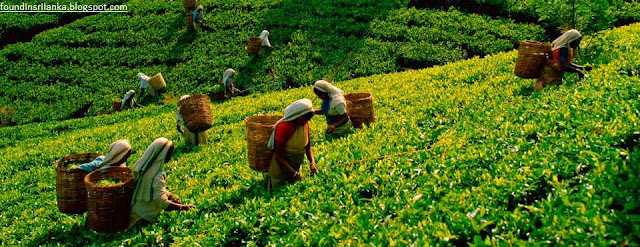The "Tea" plant, known as Camellia Sinensis, was first introduced to Sri Lanka in 1860 as a commercial crop. In 1860, James Taylor set up commercial tea cultivation at Hewahata Lulkadura Estate, in the outskirts of Kandy. I believe that James Taylor, as the father of Sri Lanka's commercial tea cultivation, is not wronged. The first tea plantation was introduced in 1824, although the introduction was not for commercial purposes, but for research purposes.
"Tea" has become the most popular drink in the world. It is not wrong to introduce Sri Lanka as the owner of the true Tea flavor. It is a great honor for us. Tea has a great demand in Sri Lanka and popularity has remained unchanged in the past. Tea is leading crop, through Sri Lankan commercial crops. Moreover, Tea industry is able to earn more foreign exchange to Sri Lanka. As a result of the employment opportunities, approximately one million employees work in the tea plantation sector.
Tropics and subtropics can be considered as a tea-growing crop in the region. Further, a temperature for tea cultivation is 15.6 degrees Celsius and 27 degrees Celsius. The tea tree's growth is necessary for rain all year round. The rain is necessary for tea plant’s growth all year around.
Although the use of seeds for tea planting is an old method, seedling shoots are now used to obtain plants. This is known as VP. The brown soils are suitable for growing tea plants.
Although it is naturally up to 10 meters high, it can be planted in the tea tree, but if it is grown up to 1 meter as a commercial crop, it can hinder the leaves. Therefore, the pruning of the tea plant is carried out. If you look at this process in one way, it can also be called a repeated rejuvenation of the tea plant.
Tea plucking is an art. This requires more skilled workers. The uncovered leaf and the two leaves below have to be harvested. Because it's used for the production of high-quality tea. Only use the labor resource for plucking the leaves, because the mechanized plucking is harvested as a result of the mixing of harder parts than the leaves. If the hard part is mixed up, the quality of tea production can be reduced.
Reclaiming the tea leaves for the tea factories. Tea leaves are divided into four categories. That is,
• Green Tea
• Unfermented Tea
• Black Tea
• Semi unfermented Tea
The prepared tea is then put into foreign markets, packed in wooden boxes or flax.
Tea leaf industry is mainly done in Nuwara Eliya, Kandy, Ratnapura, Galle, Matara, and Matale. The share of tea produced in Sri Lanka is more than 90% of the tea export to the foreign market. The highest number of tea in Sri Lanka is taken by the United States.







No comments:
Post a Comment